Natural Wonders of Turkey: Breathtaking Landscapes You Must See
Turkey is one of the rare countries where three different climatic zones meet, while hosting the world's most impressive natural wonders with its unique geological structures and rich biodiversity. From the misty forests of the Black Sea to the canyons of the Mediterranean, from volcanic crater lakes to gigantic waterfalls, these natural beauties offer unique routes for both adventure enthusiasts and travellers who want to be alone in nature. If you are looking for answers to questions such as “What are the must-see natural wonders in Turkey?”, “Which national parks should I visit?” or “ Recommended routes full of natural beauty in Turkey”, this comprehensive guide is for you. Let's discover the most impressive natural riches spread all over Turkey together.
1. Cappadocia - The World of Fairy Chimneys
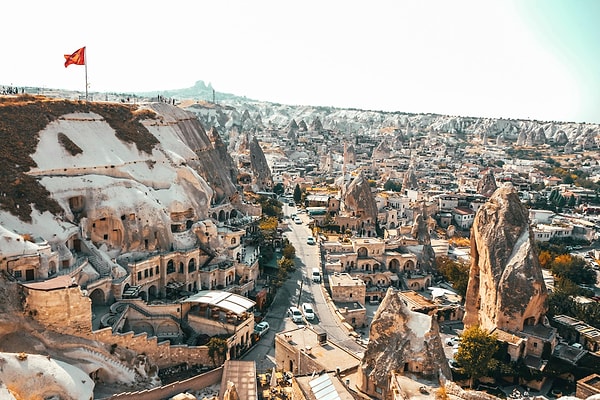
Cappadocia has a unique geological structure formed as a result of millions of years of volcanic activity. The tuff layers formed by the lava erupted by Erciyes, Hasan and Melendiz mountains have been subjected to wind and water erosion over time, resulting in the iconic formations known today as ‘Fairy Chimneys’.
The region has been home to many civilisations from the Hittites to Byzantium. Underground cities carved into the valleys, rock churches and frescoed chapels bear the traces of historical heritage. It is on the UNESCO World Heritage List due to its natural structure.
While the vegetation shows steppe characteristics, vineyards growing in the valleys are important in wine production. In terms of fauna, species such as foxes, rabbits and wild boars are common.
In terms of transport, it is possible to reach Nevşehir, Kayseri or Aksaray by road. The nearest airports are Nevşehir Cappadocia Airport and Kayseri Erkilet Airport.
Must-see places in the vicinity include Ihlara Valley, Derinkuyu Underground City and Uchisar Castle. Hot air balloon tours at sunrise offer an unforgettable experience for those who want to explore the region from above.
2. Lake Salda - Turkey's Maldives

Lake Salda, located in the Yeşilova district of Burdur, attracts attention with its white beaches and turquoise water. The surface of the lake is about 45 km² and is one of the deepest freshwater lakes in Turkey. Scientists have included it in NASA research by comparing the structural similarity of the lake with the Jezero Crater on Mars.
This lake, which is rich in magnesium, is also home to stromatolite-like microbial life forms. Therefore, it is important in terms of both biodiversity and geological authenticity.
Surrounded by pine forests, species such as wild boars, foxes and squirrels can be seen in the lake. The vegetation is generally composed of steppe and coniferous trees. The lake is also under protection; some of the shores are closed in a controlled manner to prevent construction and crowding.
It is possible to reach Salda by private car or bus from Burdur city centre or Denizli. There are more frequent bus services in the summer months.
Kuyucak, known as Lavender Scented Village, Burdur Archaeological Museum and the ancient city of Sagalassos in Ağlasun are among the places to be seen in the immediate vicinity.
3. Kaçkar Mountains - A Scenic Journey to the Top of the Black Sea

The Kaçkar Mountains, stretching between the borders of Rize and Artvin, are home to the fourth highest mountain in Turkey, Kaçkar Peak (3,937 m). The Kaçkars are a natural wonder surrounded by alpine meadows, glacial lakes, waterfalls and vast forests.
The region is popular for both mountaineering and hiking. Hiking routes and camping areas between plateaus attract the attention of nature lovers. Plateaus such as Ayder, Pokut, Gito, and Elevit are just a few of the most well-known ones in Kaçkars.
The vegetation is rich and contains endemic species. Forested areas are covered with spruce, beech and oak trees. Species such as bear, jackal, wild goat, hawk and falcon are frequently seen. The region is located within the Kaçkar Mountains National Park and is under strict environmental protection measures.
Transportation is usually provided by minibus or private car from the centre of Rize to Çamlıhemşin district and from there to the plateaus. Rize-Artvin Airport is the nearest air transport point to the region.
Nearby nature and history riches such as Zilkale, Palovit Waterfall and Fırtına Creek must be seen.
4. Saklikent Gorge - Fethiye's Extraordinary Natural Passage
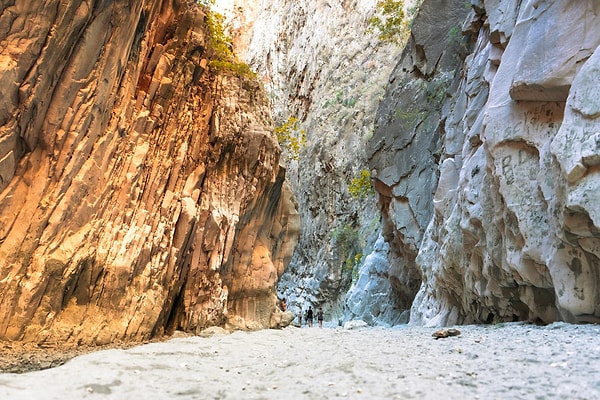
Saklikent Gorge, located on the borders of the Seydikemer district of Mugla, is the second longest canyon in Turkey. Its length is approximately 18 km and its depth reaches 300 metres in places. The canyon was formed by the erosive power of Eşen Stream for thousands of years.
It is a very popular activity to walk in its icy waters and to walk between the canyon walls. Offering a natural air conditioning effect on hot summer days, the canyon remains cool even in the middle of summer.
The gorge is surrounded by maquis vegetation. It has a small but rich fauna with wild goats, water snakes, lizards and bird species.
It takes about 40 minutes to reach Saklikent by car from the centre of Fethiye. Daily tours are also organised in the summer months.
Activities such as rafting and zip-lining can be done around the canyon. Natural and historical attractions such as Tlos Ancient City and Yakapark can also be visited nearby.
5. Munzur Valley - The Hidden Paradise of Eastern Anatolia
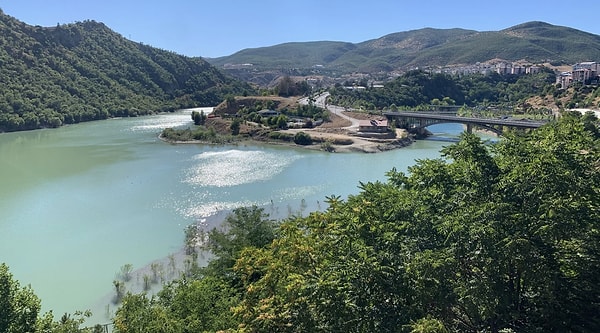
Located within the borders of Tunceli, Munzur Valley National Park is one of the largest national parks in Turkey. This valley along the Munzur River attracts attention with its rich flora and fauna.
The vegetation is dominated by oak, juniper and poplar trees. Rich in endemic plants, the region is a research area for scientists. Rare species such as bear, lynx, wolf, wild goat and otter live here.
Munzur Spring, the exit point of Munzur Water, is one of the most fascinating spots in the region. At the same time, these eyes, which are considered sacred by the local people, are also culturally important.
Access to the region is provided by road to Tunceli via Elazığ. The nearest airport is in Elazığ. You can go from Tunceli to Ovacik and make a journey intertwined with nature along the valley.
Apart from Munzur Gozeleri, Halvori Gozeleri, Tunceli Museum, Pülümür Valley are also worth exploring.
6. Dilek Peninsula - Büyük Menderes Delta National Park

Dilek Peninsula - Büyük Menderes Delta National Park, located near the Kuşadası district of Aydın, is one of the rare places in Turkey where both coastal and mountain ecosystems coexist. Spread over 28,000 hectares, the park is full of canyons, bays, lagoons and maquis forests.
The national park is the intersection point of Mediterranean and Aegean vegetation. Plant species such as oleander, laurel, sandalwood, red pine and myrtle are common. Wild boar, lynx, caracal and Mediterranean monk seal are among the important fauna of the park. It is also one of the most valuable deltas in Europe in terms of bird watching.
It is possible for visitors to reach the park by road from Aydın centre or via Kuşadası. There is a car park and a visitor centre at the entrance of the national park. There are trekking routes, bicycle paths and viewing terraces inside.
Those who go to the region can also visit areas such as Guzelcamli Beach, Zeus Cave, Kalamaki bays and Karina region.
7. Nemrut Crater Lake - Turkey's Largest Crater Lake
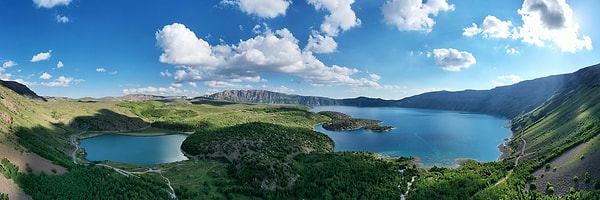
Located in the Tatvan district of Bitlis, Nemrut Crater Lake is the second largest crater lake in the world and the largest crater lake in Turkey. Located at the summit of Mount Nemrut at an altitude of 2,250 metres, this lake forms a huge caldera with a diameter of about 12 kilometres.
The region was formed as a result of the eruption of the once active Nemrut Volcano. There are also hot and cold lakes, steam chimneys and caves around the lake. The hot water lakes in the crater evaporate in summer and winter, which affects the local climate.
The crater surroundings are covered with steppe and alpine meadows. Animals such as otters, foxes and wolves can be seen. It is also very suitable for bird watching.
It takes about 45 minutes to reach Nemrut by private car from Tatvan. In the summer months, you can reach the summit by car, but in winter it may be necessary to go on foot as it is covered with snow.
The area around the lake is suitable for camping. The Seljuk Cemetery in Ahlat and the shores of Lake Van should also be visited.
8. Ihlara Valley - Cappadocia's Hidden Canyon
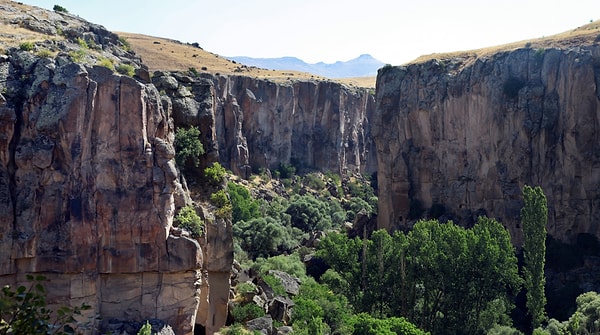
Ihlara Valley, located in the Güzelyurt district of Aksaray, is a 14 km long natural wonder formed by the erosive effect of Melendiz Stream for thousands of years. It is one of the deepest canyon valleys in Turkey with a height of 100 metres in places.
There are dozens of churches and monasteries carved into the rocks on the walking path along the valley. These structures date back to the Byzantine period and are decorated with frescoes.
In terms of vegetation, willow, poplar and walnut trees are dominant along the streams. The valley is known for remaining cool even on hot summer days. Bird species such as partridge, owl, eagle, fox and marten can also be seen.
It is possible to reach the entrance of the valley from Aksaray or Nevşehir. You can go to Ihlara Village by bus and start walking from there.
At the end of the valley, there are restaurants, tea gardens and resting areas in Belisırma Village. The nearby Selime Cathedral and Derinkuyu Underground City should also be seen.
9. Köprülü Canyon - Nature and Adventure Centre of the Mediterranean

Located within the borders of the Manavgat district of Antalya, Köprülü Canyon is an impressive natural structure formed by Köprüçay, which originates from the Taurus Mountains, opening deep valleys. The 14 km long canyon is very suitable for rafting, hiking and camping.
The canyon takes its name from the Roman stone bridge. The region is protected as Köprülü Canyon National Park. It is surrounded by maquis, pine forest and juniper trees. Species such as mountain goats, squirrels and wild boars can be observed in the region.
Rafting can be done in the river in summer. Since the difficulty level is medium, it is suitable for both professionals and beginners.
Access to the canyon is provided by private vehicle via Manavgat. Tours are also organised from Antalya. There are camping areas, local restaurants and small accommodation facilities at the entrance.
Natural and cultural spots such as Selge Ancient City, Tazı Canyon and Beşkonak villages should also be visited.
Source: Kültür Portalı
10. Tortum Waterfall and Lake - Hidden Waters of the East
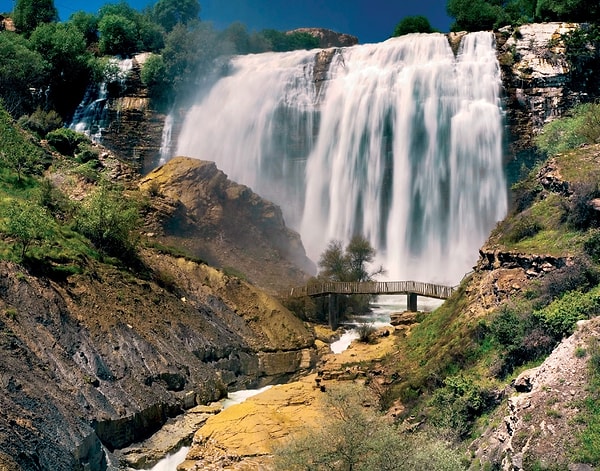
Located in the Uzundere district of Erzurum, Tortum Waterfall is one of the highest waterfalls in Turkey. This giant water curtain, which spills from a height of about 48 metres, has an impressive appearance, especially in spring when due to snow melts.
Tortum Lake was formed by blocking the Tortum Stream after a large landslide in the 18th century. The lake and waterfall form a natural ecosystem.
Since the region is mountainous, it is surrounded by pine forests, juniper and willow trees. Although the area around the waterfall is not rich in wildlife, it provides a crossing point for many migratory bird species.
Transportation to Tortum takes about 1.5 hours by car from the centre of Erzurum. The road is asphalt and full of natural views. There are walking paths and viewing terraces right next to the waterfall. There are convenient areas for picnics.
While in the region, a visit to other places such as Yedigöller (in Erzurum), Uzundere valleys and Oltu Stone bazaars will enrich your trip.
Keşfet ile ziyaret ettiğin tüm kategorileri tek akışta gör!

Send Comment